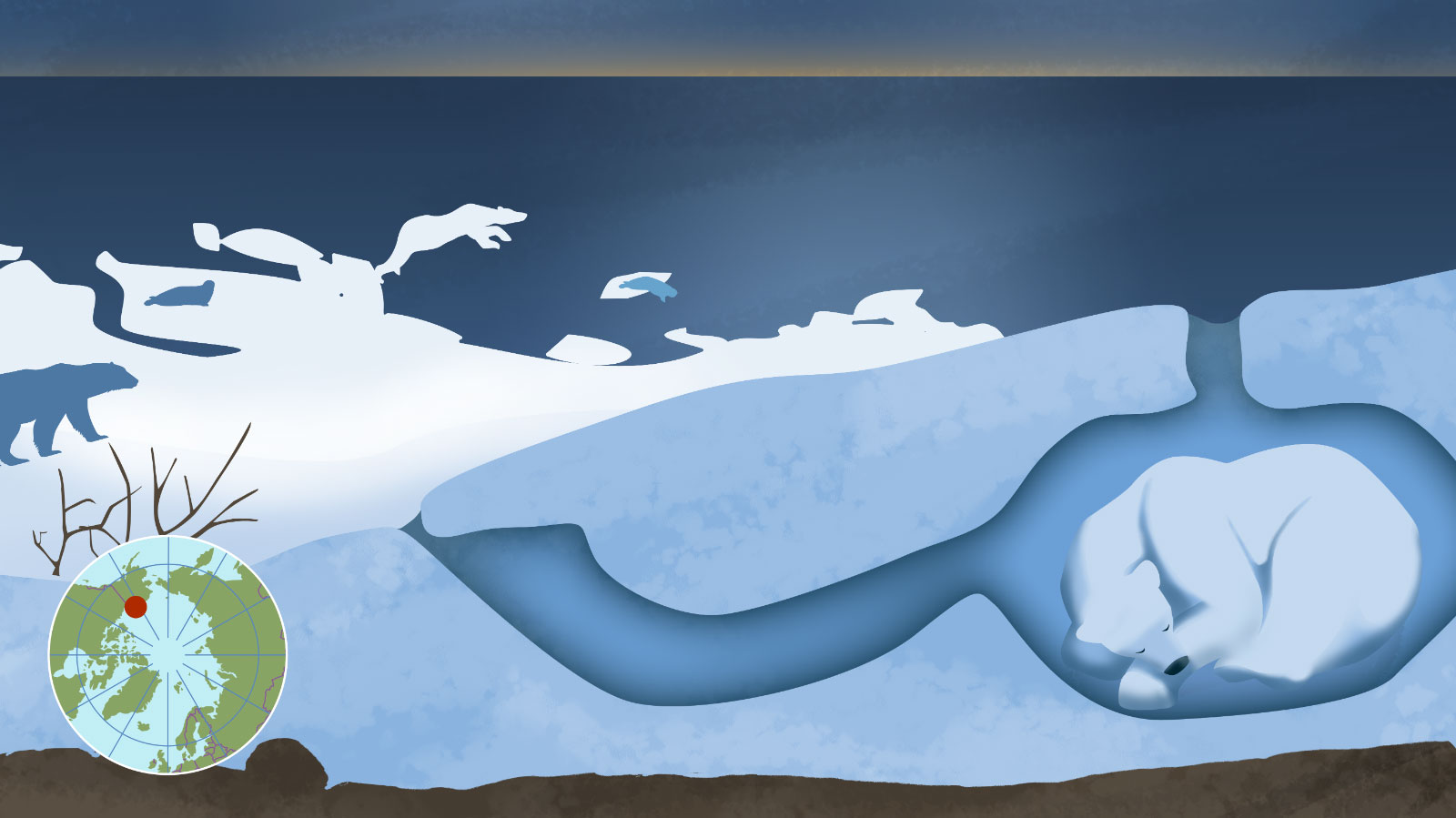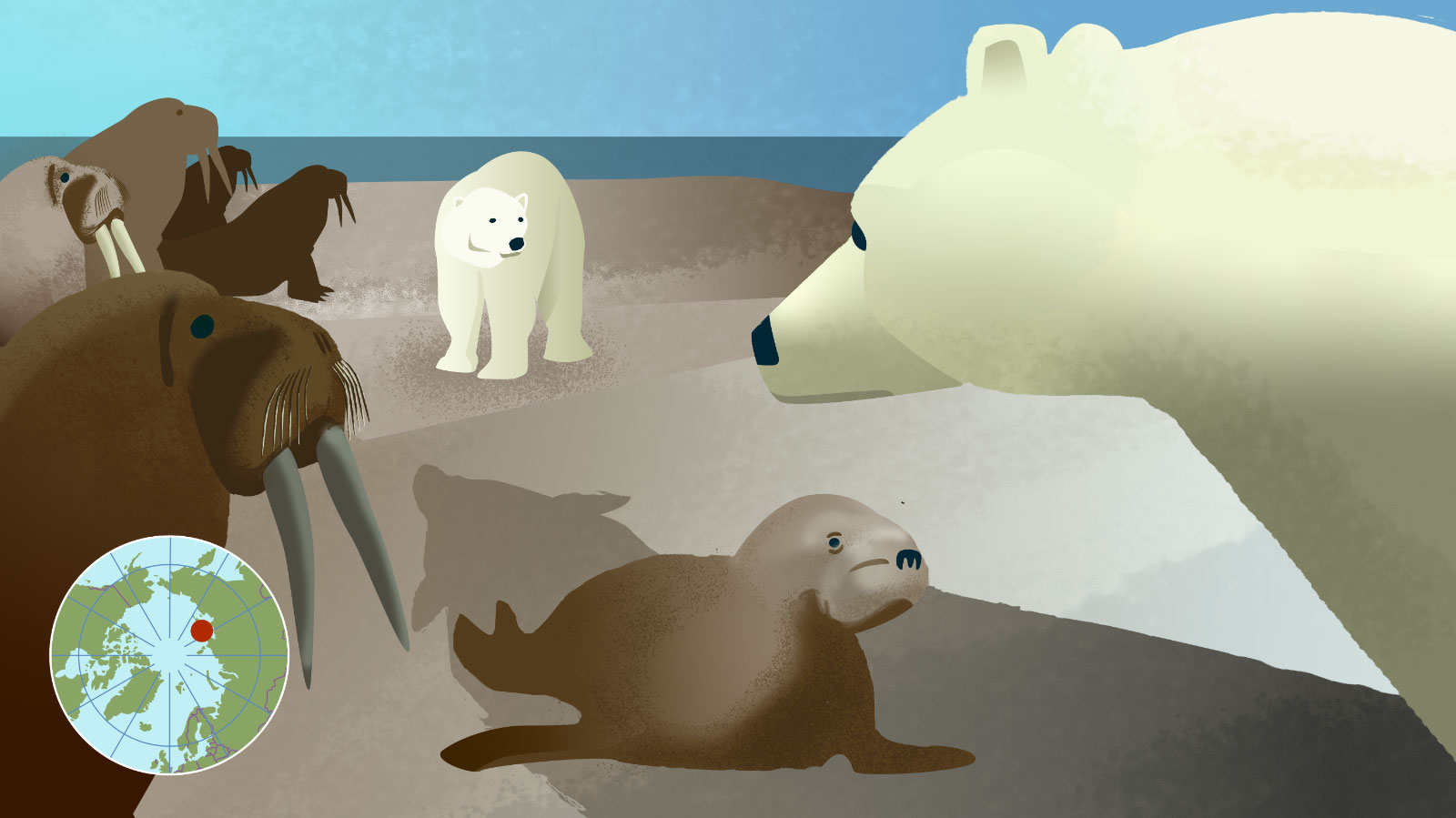© Ketill Berger / WWF
Features
As sea ice changes, so do polar bears
- Canada
- Climate Change
- Greenland
- Last Ice Area
- Norway
- Pan-Arctic
- Polar bear
- Russia
Sea ice is essential habitat for polar bears—but across the Arctic, it is disappearing quickly. As a result of rising temperatures caused by the climate crisis, sea-ice concentrations in the Arctic have declined in every decade since the start of satellite records in 1979. The ice that remains is younger, thinner, melts earlier in spring and refreezes later in autumn. The changes we are seeing are not uniform. Polar bears are experiencing and responding to them in different ways and at different rates depending on what part of the Arctic they inhabit. Encounters between people and bears are on the rise across the region.
Southern Beaufort Sea

© Ketill Berger / WWF
Denning onshore
In summer, less sea ice remains over the continental shelf, where polar bear prey are found. Many bears stay with the ice in summer and ride it north. Others come onto land to feed on the carcasses of subsistence-hunted bowhead whales. Female polar bears have shifted onto land to make their dens.
M’Clintock Channel and Gulf of Boothia

© Ketill Berger / WWF
Less ice, more food
The past three decades have completely transformed the seascape. Old sea ice is replaced by annual ice that melts and forms anew each year. The ocean is more open. There is higher productivity among fish and seals, leading to better hunting opportunities for polar bears. The bears in M’Clintock Channel are fatter than they were in the mid- to late 1990s, and their numbers have risen over the past decades.
Hudson Bay

© Ketill Berger / WWF
Less ice means lower survival rates
Sea ice is freezing later in autumn and melting earlier in spring. Polar bears have less body fat and populations are declining. Cub survival rates are lower. Polar bears are spending more time on land and turning to terrestrial food sources.
Last Ice Area

© Ketill Berger / WWF
Last refuge?
This part of the Arctic has the oldest, thickest sea ice. It is the place where summer sea ice is expected to last the longest. Not much is known about the polar bears here. Scientists anticipate that this area will be an important refuge as climate change continues to cause profound loss of sea ice.
Laptev Sea

© Ketill Berger / WWF
Using walrus haul outs on land
In summer and early fall, sea-ice cover is steadily declining. Polar bears spend the summer months at walrus haul outs on land along the coast and feed on young, sick or dead walrus.
Svalbard

© Ketill Berger / WWF
Future challenges
Svalbard is home to the fastest-diminishing sea-ice habitat among all polar bear subpopulations in the Arctic. In the last 30 years, the ice-free season has lengthened by 20 weeks. Sea ice no longer connects to some denning habitats on islands in the Svalbard archipelago. Where some bears used to be able to walk to denning locations on sea ice in autumn, they now have to swim. Polar bears here are continuing to recover from past commercial and recreational hunting.
East Greenland

© Ketill Berger / WWF
Getting closer to people
There has been dramatic loss of sea ice in the southeast in the two past decades. Sea ice is freezing later in autumn and melting earlier in spring. The lack of ice is bringing polar bears closer to villages, increasing the number of dangerous interactions with people and the potential for conflict.
By WWF Global Arctic Programme